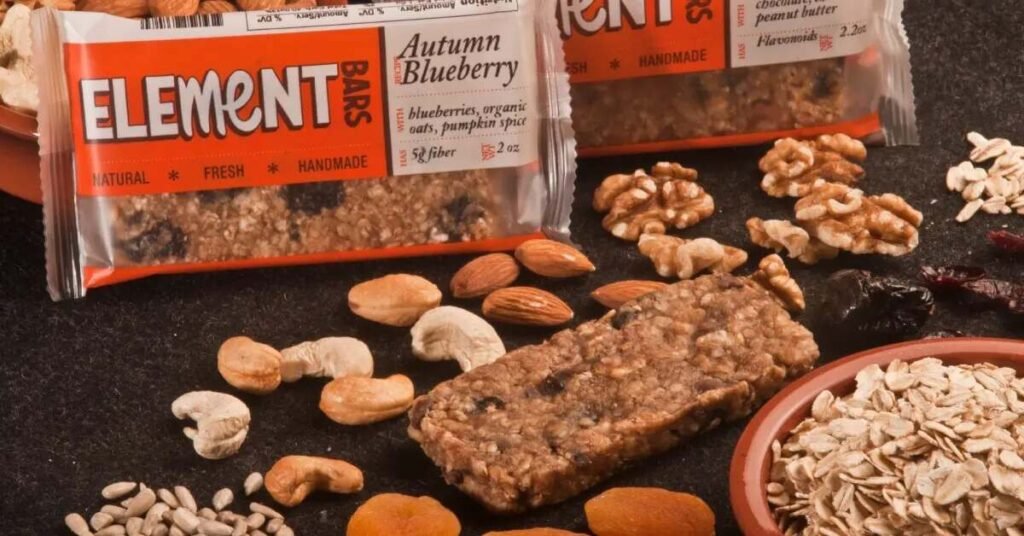Let’s cut through the glitter. Everyone loves a Shark Tank Cinderella story—brave founder walks in, lands a fat check, life changes overnight. But how many times do those handshake deals on TV actually pay the rent a year later? Element Bars is a classic case. They walked out with a handshake, but the real hustle started after the cameras cooled down. Here’s what you need to know about the rise, roadblocks, and reality checks behind Element Bars and its founder, Jonathan Miller.
Contents
ToggleWhy Did Element Bars Make the Sharks Pay Attention?
Here’s the pitch: customized energy bars, built fresh to your order. No garbage fillers, no corn syrup sugar bombs—just real ingredients you pick. That’s a serious move in a market flooded with bland, processed bars. Element Bars set itself apart by letting YOU pick the fuel for your grind. It wasn’t the first healthy bar brand, but they were one of the earliest to go all-in on customized food before it was even a LinkedIn buzzword.
When Miller stepped on Shark Tank in Season 1, it was a smart read on trends. People were tired of choking down tasteless bars marketers called natural. He gave them control and got noticed. And if you’ve ever tried pitching a food business to investors, you know how tough it is to stand out.

Backstory: Jonathan Miller’s Frustration-Fueled Hustle
Jonathan Miller wasn’t some outsider parachuting into food. He was a fitness guy getting sick of mainstream bars trashing his energy. Instead of complaining, he took heartbreak and made it hustle. The playbook was simple: build a website, offer fresh ingredients, let customers design their own protein bars from scratch.
It seems obvious now, but back then? Nobody was doing it at scale. Miller did what real founders do—he turned a pain point into a business. He didn’t wait for permission or get cute with branding before knowing people wanted it. He bootstrapped, took risks, and put his own money on the line.

The Shark Tank Pitch: Numbers, Grit, and the Custom Bar Game
Let’s break down the math because Sharks never get sold on just hype. Miller asked for $150,000 for a 15% cut—he pegged the company at a $1M valuation. Not crazy for food, and he had sales behind him.
The numbers:
- Production cost: $1.20 per bar
- Retail price: $2.99 per bar
- Weekly sales: 1,000 bars at time of filming
He pitched scalability: We can handle bigger orders. That’s gutsy. A lot of product startups break on that exact rock—can’t scale, can’t stick. The Sharks poked hard, looking for holes in logistics and margins. This wasn’t Miller’s first pitch, you could tell. He kept answers tight, didn’t waffle when they pressed about operational headaches.
Now, as someone who’s sat on both sides of a pitch table, I can tell you: the best founders show they know what’ll go wrong. Miller was crystal clear about production, shipping, and keeping flavors fresh. No showboating, just real answers.
The Deal: Camera Wins and Real-World Reality
Here’s where grit meets TV drama. Kevin Harrington was the only Shark who bit, offering $150K for 30% equity and a 4% royalty per bar. That’s pricier than Miller’s ask, but let’s be honest—lots of founders would’ve panicked and tanked the negotiation. Miller? He knew what a deal like this could do, and he took Harrington’s offer.
But here’s what Shark Tank fans don’t talk about: not every deal that closes on-air actually survives the legal back-and-forth. This one didn’t. After due diligence, the partnership fizzled. Happens all the time; it’s the muscle you build after TV that counts.
Miller didn’t sulk. He pounded the post-show PR, squeezed value out of the exposure, and kept growing even without the Shark cash. For every entrepreneur, that’s the real blueprint. Your loudest wins can be fakes, but your grind can’t.
Net Worth: Where’s the Money Now?
Did Shark Tank actually make Element Bars blow up? Was it just good TV? Let’s talk numbers.
After the show, Element Bars saw spikes in web traffic and sales—classic Shark Tank bump. They ramped up new product lines and built a slicker online customization platform. No exact net worth numbers have been published, but according to SharkWorth and industry rumor, the business has stayed on a respectable growth track, inching upwards each year. Think solid seven figures, not Bombas or Scrub Daddy levels, but way past most one-and-done Shark Tank brands.
Here’s why: Miller’s niche, customized bars, attract loyal customers willing to pay premium prices for control and quality. That’s what turns a flash-in-the-pan product into a real business.
Growth Pains: Matching TV Hype with Real-World Grit
Let’s keep it real. TV exposure brings excitement—and headaches. When orders pour in, small production runs just don’t cut it. Miller and his crew had to upgrade logistics, scale up ingredient sourcing, and keep quality high. It’s like running on a treadmill that keeps speeding up.
There were bumps. Early reviews called out slow shipping during the Shark Tank rush. But as someone who has launched products before—if you’re not getting customer complaints when you hit a growth spurt, you’re probably going too slow.
Major win? They landed retail footprints with the big boys: Whole Foods and others. That took Element Bars from pure online hustle to the shelves you see at real stores.
The Business Play: Why Element Bars Still Feels Different
So, what’s the actual cheat code here? It’s not a secret—focus on a tight niche and make every customer feel like the business is just for them. Where most big energy bar brands fight over shelf space, Miller doubled down online, customizing for every order, every taste.
The value wasn’t just healthy bars but your bar, your way. That’s how you build loyalty. Smart founders know that customer loyalty trumps fads. (Look at Allbirds, Glossier, or any successful DTC play—they milk a rabid fanbase, not just a trend.)
Element Bars didn’t get greedy with expansion. They kept their offering focused, their branding clean, and chased partnerships, not just random shelf space.
Staying Power: Where Does Element Bars Stand in 2025?
So, here’s what every hustler wants to know: did they fizzle out, or are they still in the race? Check the scoreboard—Element Bars is still alive and kicking, with Jonathan Miller running the show and the same core focus on personalized nutrition.
No, they’re not on every shelf like Kind Bars or RXBar. But honestly, in a game this competitive, survival—plus steady growth—is a win. They never became a unicorn, but they’ve outlasted hundreds of Shark Tank flameouts.
Their website is smooth, the customization engine is sharper, and their loyal fans keep coming back. They own their niche, and nobody else is doing personalized bars at this level.
Final Take: Can Customized Bars Keep Winning?
Here’s the raw truth—most personalized snack startups stall because people get bored or costs spiral up. But if you’re obsessed with quality, listen to your users, and don’t try to be all things to everyone, you can build something sticky.
Element Bars’ custom platform is no get-rich-quick scheme. It’s gritty, high-touch, and requires a founder who gives a damn. Miller is still at the helm, still pushing out new recipes, still doing the work most food execs have never touched.
If you’re thinking of copying the model, understand the grind: custom food means manual labor, raw supply management, and constant tweaks. Most founders tap out before they even hit mass-market.
But Miller’s lesson is simple: own your segment, serve your core, and get real feedback fast. Don’t let hype dictate your next move.
FAQs: Element Bars, Shark Tank, and What the Hustlers Want to Know
Is Element Bars still in business today?
Yes, they’re very much in business. The website is live, product reviews are fresh, and Miller’s still running the shop.
Did Element Bars actually close the Shark Tank deal with Kevin Harrington?
No, the deal with Kevin Harrington was made on TV but didn’t go through after due diligence.
How can customers order custom bars now?
Head straight to the Element Bars website—customize every ingredient, and they ship straight to your door.
What’s happened to Element Bars’ market share since its TV appearance?
They’re not dominating giants, but they’ve carved out a growing slice in the personalized health bar market.
Who owns Element Bars after all these years?
Jonathan Miller still owns and runs the company. He’s stayed closely involved since the beginning.
Can you find Element Bars in major retailers?
You’ll find them in some health-focused stores like Whole Foods but most action is still online.
Who runs Element Bars now—still Jonathan Miller at the helm?
Yes, Miller’s hands-on, driving new product lines and partnerships.
What’s the biggest lesson from Element Bars’ Shark Tank journey?
TV deals don’t guarantee success. The real winners outwork, outlast, and never let setbacks kill the hustle.
Want real numbers, drama, and founder lessons with no sugarcoating? That’s what Element Bars delivers. Forget the fairy tales. Real entrepreneurship is about swinging hard and staying scrappy when the noise fades. Look up their stats on SharkWorth if you want the receipts. And if you’re hungry to build, learn from the sweaty, day-in-day-out grind, not just what made the final cut for TV.










